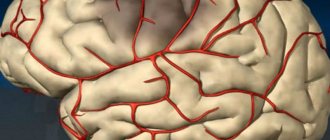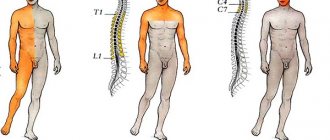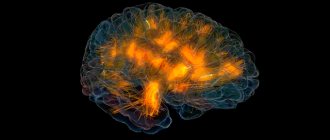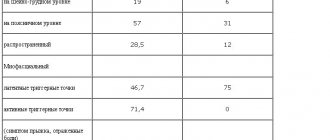Thinking in general is the ability of the human psyche to fully reflect reality, objects, phenomena, as well as significant connections between them. This is a typical feature of the human mind that is the result of long evolutionary changes. The possibility of mental activity allows you to effectively engage in a variety of forms of activity: from cognitive to creative, transformative.
Abstract thinking is the main form of cognitive abilities and plays the greatest role in the use of logic, formal logic, and its other forms, cognitive activity, studying the world around us and describing it in the form of consistent concepts.
What does abstract thinking mean? In simple words, it means the ability to describe objects and phenomena in a generalized form, using special conditional tools. That is, concepts. Determine the connections between them through judgment. Isolate new knowledge from already known premises through inferences. These are the most powerful ones capable of determining the truth, systematizing the world in all its diversity using standard mental operations. Such a possibility is present only in humans, as an intelligent species.
The lack of developed abstract thinking is considered normal until a certain age. The active formation of abstract theoretical thinking occurs in the period from 5 to 12-13 years. At this time, a person learns to operate with formal, abstract categories and fully understand their essence. The rate of development varies from person to person. You can develop the ability to think this way at any age; there is a group of exercises.
About forms of abstract thinking
Cognitive capabilities are heterogeneous in internal composition. The classification is carried out according to the predominant operation and type that is used in each specific situation when solving a specific problem. Forms are most accurately determined using methods and tools of formal logic. There are three main types in total.
Concept
The most universal category. Through the conceptual apparatus, a person has the opportunity to define any phenomenon, any object, process, all objects of the surrounding world in all their diversity. The concept reflects the most essential features of the structure being described, and therefore focuses attention on its distinctive features. This allows you to delimit objects from each other. For example, it is clear why an apple is an apple and not a watermelon, and a car is not a refrigerator. The concepts vary in scope; they can be visually represented in the form of Euler circles. There are several types of volume ratios within the framework of the definition of the conceptual apparatus:
- One concept includes another. For example, fruits, peaches. The first category will be more general compared to the other. Therefore, it is depicted in the form of a circle enclosing the second circle. And there can be many such circles, since in addition to peaches, the concepts of other fruits can be formalized.
- The concepts partially overlap. These are more contextual situations. For example, when objects are identified that have specific features and at the same time are somewhat similar. As an option. Students playing chess and students playing football. There will be a similarity in concepts in the part of students who play chess and football at the same time.
- Complete mismatch. When concepts do not have a common scope. Cars and elephants. People and pears.
The concept must be clearly defined; this is the basic requirement. Because without highlighting the essential features of a phenomenon, there can be no clear definition of the essence. The definition must include the main features, those that allow one to isolate an object from a group of others and give it generalized aspects.
Judgment
This is a kind of sentence in which something is affirmed or denied. The truth of what is said in this case should be sufficient to further apply judgments for mental and logical operations. For example, all people love to ride a bicycle. Only if the truth of what has been said is proven, can such a statement be used to obtain new knowledge.
Judgment is determined by volume. Thus, a statement is possible regarding a whole layer of objects (defined by the prefixes “everyone”, “nobody” or the pronouns “I”, “you”, which also have a sign of integrity in the context of formal logic). Also the use of part of objects (“some”, “those”, etc.). Depending on the type of judgment, the further method of operating them is determined.
Inference
The third elementary form of the named method of mental activity. It is considered a way to obtain new knowledge from already known ones. There are several types of this. The classic case is a syllogism. When there are two premises, then there are two judgments from which some new conclusions can be drawn. As an example:
- all machines are mechanisms;
- all mechanisms run on fuel;
- therefore, all cars run on fuel.
In this case, a person gains knowledge indirectly, using simple tools. You can omit the essence of the phenomenon, bring it to the point of absurdity, but the essence will remain the same:
- all people are pears;
- all pears love to sleep;
- therefore, all people love to sleep.
In formal logic, there are schemes that determine the final conclusion from the premises. The so-called figures of a syllogism. There are four of them in total, according to the number of possible initial judgments (denying all or in part, affirming all or in part).
There are other ways to gain new knowledge. For example, lemmas, etc. They are derived from the basic ones and have their own resolution laws. Also inductive and deductive inferences that come from other initial premises.
Abstract thinking is directly related to formal logic and mathematical abilities. Developing one, the other develops in parallel.
Thus, the forms of abstract thinking include concept, judgment and, as a way of obtaining new knowledge, inference.
Characteristics of abstract thinking
A group of specific characteristics is typical for this type of mental activity.
Distraction, lack of connection with a single specific object
Continuing the examples mentioned above. If they talk about an apple. This refers to a class of fruit, a variety, rather than any specific apple. However, the object can also be a specific apple if some conclusion is drawn regarding it. For example: “An apple is on the table. I didn't put it on the table. Only my neighbor is in the room with me. Therefore, he put the apple on the table.” Through simple inference, a person logically comes to a conclusion about the actions of another person. An apple in this context is just an object that is used as a concrete concept to obtain concrete knowledge, but by abstract methods.
Generality
That is, maximum distraction from minor moments when acquiring new knowledge. There is no need to focus on unimportant facts. It doesn’t matter whether the neighbor put the apple with his left or right hand, to put it exaggeratedly. When solving complex problems, such generalization allows you to abandon many points that do not make any sense in the context of the problem being solved.
Operating with formal units, concepts, judgments, conclusions
When applying the methods mentioned above, a person uses logical structures. They have clear boundaries. This is very convenient because it allows you to concentrate on the methods, eliminates possible errors and makes it possible to clearly structure the information received.
Presence of an explicit verbal component
Although not in all cases it is present at an early stage. It's about the final product. Abstract thinking always has a final phase, a product that is used within the framework of theorizing or hypothesizing. Therefore, it is necessary to put conclusions into verbal form. Moreover, usually in writing for further analysis and use of the final result as a starting point for further activity. However, in the process, intermediate results may be in the form of thoughts that do not have verbal expression.
The described features are typical of abstract logical thinking. And only for him.
Where is it used?
Children, with the help of abstract thinking, draw, design, sculpt, understand the meaning of riddles, can solve problems, and coherently express their thoughts when describing events. During school years, this type of mental activity helps schoolchildren master mathematics, which requires the ability to operate with a lot of data, divide them into groups, and look for relationships.
Abstract thinking is used in logic, physics, astronomy and other exact sciences, where one must be able to measure, count, calculate, and combine elements into one group. It is necessary for psychologists, philosophers, writers, engineers. Time management is unthinkable without it.
In everyday life, people also constantly use abstract-logical mental activity. Examples of abstract thinking reflect everyday human thought processes. Planning often intersects in the imagination with dreams and fantasies. Young people looking for a job can come up with so many things that, when faced with reality, they cannot stand the conditions offered to them. So girls, waiting for a prince on a white horse, mentally endow their future chosen one with unrealistic traits. This inevitably leads to disappointment in the future.
In what cases is there a violation of normal cognitive abilities and can this be corrected?
Abstract thinking is a typical feature of the human personality and psyche. It does not develop in one moment. It takes some time. Usually, abilities are fully formed by adolescence; there may be variants with delayed development or early development. The development of abstract thinking in a person ends by the age of 15-16 years. In psychology and neuropsychology there are some discrepancies on this issue, but they are not significant. Deviations should be considered as a potential symptom of psychopathology.
Impairment of abstract thinking can be the result of congenital pathologies of the genetic profile of the central nervous system. These include oligophrenia in different types, Down syndrome. These are the main diagnoses. There are others too. They are united by pronounced dementia and lack of ability for logical thinking. In almost 100% of cases, other forms of mental activity are also affected. There is a drop in IQ to critically low levels. With a mild degree of mental retardation or debility, it is possible to perform simple operations. With sufficient compensation, changes are minimal.
Abstract, abstract thinking is a target in schizophrenia. Especially malignant or long-term. Intelligence formally remains at a normal level, but the patient is unable to use the tools, so a semblance of dementia begins. This is a type of defect, the so-called negative symptoms. Typically, such conditions are not subject to reverse development or any correction. However, modern psychotropic drugs have the ability to combat the negative manifestations of the pathological process.
There are diagnoses in which the disorders are temporary. Although they can be significantly expressed. These include, for example, depressive states, manic-depressive psychoses, and reactive psychoses.
The speed of abstract thinking decreases when using alcohol or taking drugs. Or mental abilities are seriously weakened.
There may be several options. The issue of diagnosis is no longer the sphere of psychology. The problem is solved by psychiatrists, psychotherapists, and in some cases neurologists in tandem with mental health specialists.
It is not always possible to cope with these problems. It all depends on the diagnosis. The highest quality correction is carried out when eliminating depression, alcohol disorders, and the consequences of drug use.
Visually effective type
This is the earliest form of mental activity that develops in humans. It is typical for children under 3 years of age. Mental operations are based on manipulations with really existing tangible objects. Each problem is solved immediately at the practical stage, during manipulations with objects. Thinking disorders of this type are rare. Mainly with severe mental retardation. They lead to the fact that the process of development of brain activity as a whole slows down or stops.
How and when does developmental disorder develop?
This is the first stage in the development of mental activity. The time frame for its development to begin varies. Some experts indicate that a child is capable of simple mental operations from birth. Others say that the development of mental processes is closely related to the ability to move and appears simultaneously with a decrease in muscle hypertonicity. Estimated time frame: 6 months – 1 year.
Vivid and uncontrolled manifestations of visual-effective thinking in children over 3 years of age, adolescents and adults indicate serious mental disorders - mental retardation, regression in psychosis. The patient exhibits a pronounced desire to grab, break and hide surrounding objects.
Manual or visual-effective thinking of children and ways of its development
This type of solving life problems got its name due to the fact that the child constantly performs some kind of manipulation with surrounding objects. The most striking manifestations are the baby grabbing toys, knocking them, testing them, licking them, trying to take them apart and put them back together.
It makes no sense to wean a child from these manipulations; a much more important task for parents is to provide the child with toys that he can disassemble and assemble without damaging them. An excellent option is sorters. This educational toy has many functions and modifications. The principle of operation is usually similar - assemble, disassemble, correlate colors, edges, shapes. This is both a puzzle and a construction set in one toy. Check out the selection of smart toys in different prices and variations.
Visually effective type of thinking in adults
In adults, such mental operations are involved in cases where the result of actions cannot be predicted on the basis of existing inferences. A striking example is mastering an unfamiliar technique. Arrangement of furniture in the room or objects on the table, selection of necessary materials according to shape, texture, subjective sensations.
What tools does abstract thinking use: types and examples
Formal methods use three main modes of mental activity. However, this is not all. To gain deeper knowledge about the subject of research, a lot of auxiliary tools are used.
Analysis
The process of speculative division of an entire object, phenomenon or process into its component parts. Depending on the subspecies used, it is then possible to study each individual component or highlight the most significant features. An example of the first is the concept of crime in law. Includes objective and subjective sides, object and subject. It is possible to separate a very real object during analysis, to physically separate its parts. In the study of mechanisms, human organs, tissues within the framework of anatomy, pathological anatomy, etc.
If we talk about the second subtype, the most typical example is the development of a definition of a concept, the derivation of a definition. For example, a person. What properties can be identified? Walks upright, has two pairs of limbs, eyes, hearing organs, is intelligent, has the ability to think and speak, etc. When analyzing the second type, only essential features need to be highlighted. What is important in this case? Speech ability, mental activity, upright posture. This is how this technique is used.
Synthesis
The opposite phenomenon to analysis. The process of combining component parts into a whole. It is especially actively used in scientific practice, in the application of legal norms by specialists in the field of jurisprudence, doctors when conducting diagnostics and drawing up a unified clinical picture (then hypotheses regarding the disease are put forward). Mental operations are closely related to everyday life.
Systematization (or classification)
Distribution of a group of concepts or real objects into classes. It has a formal basis - that is, the line along which the distinction is made. An example is geometric shapes. The criterion is the number of angles. Absent - ovals, ellipses, circles. Three is a triangle. Four - square, parallelogram, rectangle. And so on. The most productive use of classification is in scientific practice and statistics.
Comparison or comparative analysis
It consists of comparing two structures and objects. In identifying similarities and differences. It only makes sense when the objects are truly similar. There is no point in comparing people and fruits, it is absurd and will not bring any new knowledge, since the essence is already well understood. But the comparison of humans and primates, humans and animals, and so on, makes sense in the context of evolutionary concepts, biological, anatomical knowledge.
Specification
Or the deductive method. Based on the transition from general knowledge to a particular case of the existence of the same phenomenon. To take an example: in European countries it is hot in the summer. Ukraine is a European country. Consequently, it is hot in Ukraine in summer. Essentially this is a type of inference.
Induction
There is also the opposite phenomenon. When a movement is made from private knowledge to general knowledge. It would be fair to give this option here. It's hot in Ukraine in the summer. Ukraine is part of Europe. Consequently, European countries are hot in summer. There's a big problem here. While deductive inferences are mostly true, inductive inferences are likely to be false. Because the law of sufficient reason is violated. Generalizations are made with great caution and require empirical confirmation.
Analogy
Transferring the properties of one object to another. Such a transfer also requires a careful approach, since the truth is not always the case. However, this is a bold technique; it allows you to take a fresh look at familiar things. It is used not only in scientific activities, but also in applied fields. Based on this principle, some laws of aerodynamics were determined, aircraft were designed, etc. The basis was studies of the life activity of birds and biological creatures.
These tools, when used correctly, provide a wealth of information. Allows you to achieve high-quality results in research and practical activities. The areas can be very different. Forms of abstract thinking in such a context also act as tools, only more general ones.
Upon analysis, the difference between abstract and concrete thinking becomes clear. If the first deals with logical constructions and follows clear laws, the second is spontaneous and based on experience, working with specific objects here and now (although the logical variety can also deal with specific objects if they have meaning within the context of the situation).
Methods for checking the degree of development of cognitive abilities
Checking the degree of development of abstract thinking does not present much difficulty. Psychologists also deal with it. How exactly can abilities be explored? The following group of tests is used:
- The standard test for abstract thinking is the Eysenck test. Allows you to explore intellectual capabilities. Additionally, other tests may be used, depending on the situation.
- The abstract-verbal style of thinking can be assessed based on the results of a conversation with a person. Additionally, a situation or topic may be presented, on which the subject must draw conclusions. This will provide more information than a simple oral interview.
- It is possible to use special logical tasks. They allow you to study the speed of abstract thinking, its quality, direction, and the ability to quickly switch from task to task, from process to process.
A person can check himself. However, it is better when an experienced psychologist is involved in the case.
What is the benefit
Without developed abstract thinking, a person has only his experience and current perception of the environment. It is the ability to abstract from external reality that helps us:
- anticipate certain situations;
- come up with something new;
- create musical and literary works;
- engage in sculpture, painting, architecture;
- philosophize on various topics;
- find innovative ways to solve problems, etc.
With age, a person with developed abstract thinking becomes less categorical. He knows how to recognize the validity of someone else's point of view and admits that the same issue can be looked at from different angles.
However, some researchers also note the negative aspects of such thinking:
- lack of specifics;
- inability to make final logical conclusions;
- tendency to overgeneralize.
According to Hegel, this type of thinking can express both intelligence and stupidity. In his essay “Who Thinks Abstractly?” he gives his thoughts on this topic and tries to refute the assertion that abstract thinking is an indisputable sign of highly developed intelligence.
More than 100 cool lessons, tests and exercises for brain development
Start developing
Undoubtedly, for harmonious and effective mental activity it is best to maintain a balance between a rational and abstract vision of the world.
Is it possible to develop abstract thinking, how and how long will it take?
How to develop abstract thinking and is it even possible to do this? Yes, you can. Methods exist. However, this is not a quick process. According to various estimates, it will take from several months to a year to achieve high-quality results. It is easiest to develop such abilities in adults. Children don’t have much sense; you need to wait for the final formation of logical abilities and only then start. That is, during the teenage years. Techniques:
- Oral exercises. Reasoning on specific topics with conclusions and others. They also allow you to develop a verbal style of mental activity.
- Solving logical problems. As much as possible. Preferably with a gradual increase in complexity and a clear description of the process of thinking. Guesswork and simple coincidences must be excluded.
- Writing essays on specific topics. Expressing arguments for, against, one’s own position and conclusions on the issue. This allows you to develop not only abstract, but also critical thinking.
Practice SWOT Analysis
SWOT is an assessment of the Strengths and Weaknesses, as well as the Opportunities and Threats of anything: an idea, a proposal, an object.
It’s easier to explain how this is done with an example. Let's say you're thinking about going out to fast food for dinner. Strengths: fast, cheap, tasty. Weak: harmful, high in calories. Opportunities: no need to prepare, free up time to learn programming. Threats: you can get poisoned or simply overeat, and you won’t want to do anything anymore. You can also analyze the option “write code now” or “take on another freelance job.” And make a rational choice.









